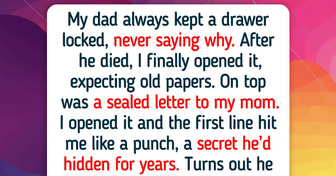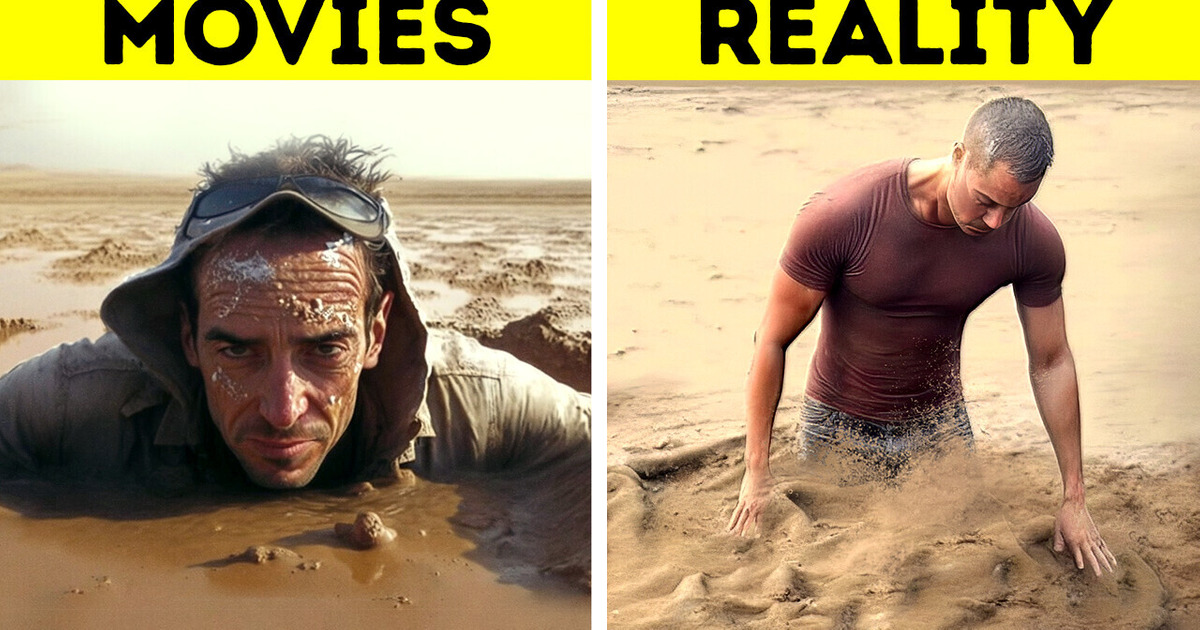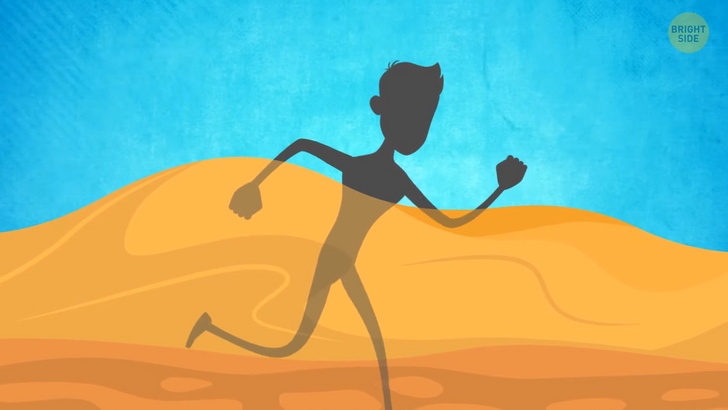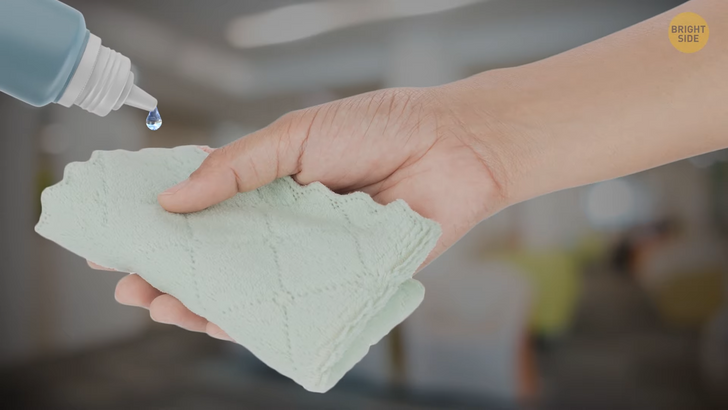11 True Stories That Prove Real Life Doesn’t Need a Screenplay


You’ve probably seen at least one epic quicksand movie scene in your life. Watching a person gradually sink in the sand might cause tangible anxiety. And even give you ASMR sensations.
Movies taught us to believe that falling into quicksand without any help around is fatal. And struggles only help to bring the sad ending closer. This myth may cause problems in real-life situations, so let’s debunk it!

When researchers studied quicksand they revealed that it tends to thicken with time. But it still remains very sensitive to movements, even small ones. At higher stresses, quicksand can liquefy in a blink of an eye. But thankfully a person who tries to swim out of the quicksand will never manage to drown completely.
Humans just aren’t dense enough. Quicksand is basically water mixed with fine sand and clay. And the density of the human body is twice lower. So unless you’re a superhero made of unknown massive metal, there’s no reason to panic.
Remember that you would probably descend about up to your waist without going any further. Although you might feel the tension in your chest, the quicksand will allow you to float away. It might be harder to get out once the sand sediment begins to form. In this case, the quicksand’s viscosity will increase and require solid amounts of force. So let’s say you’ve just stepped into a quicksand. How to get out?
First of all, if you’re wearing a backpack or something heavy, drop what you’re carrying immediately. If possible, get rid of your shoes too. It usually takes a minute for the mud to liquify, so you can try to take a couple of quick steps back. But if you feel that you’re stuck, avoid taking large steps. Movie characters usually begin to yell, and their friends tug on them with all their might. But in fact, it’s not so safe for your body.

Just wriggle your legs around to create a space between the body and the quicksand. This way water can flow down to loosen the sand. It’s important to do it slowly and gently. And if you happen to sink up to your hips or higher, bend backward. This way it will be harder to sink. Keep on floating on your back and gently pull your legs out of the trap.
Once your legs are free you can use your arms to smoothly propel yourself backward as if you were swimming. When you find yourself at the edge of the quicksand, carefully roll to hard ground. Also, it will be good to carry a stick when you walk in risky areas. It’s helpful when you need to detect upcoming quicksand. And if you’re already stuck, you can put it horizontally behind your back. It will create a bridge on which you can lean while crawling out.
By the way, an object with a higher density would still float on a quicksand. Aluminum, for example, is almost 1.5 times more dense than quicksand. When researchers placed an aluminum ball on top of a container with specially created quicksand, the ball remained on the surface.
When they began shaking the container gently — the ball stayed floating on top. But when they shook it a bit harder, the ball sank to the bottom. So if, say, you dropped a pack of cash on quicksand, and you want it back, pull it very carefully using long tongs and avoid touching the mud itself.

Phew! Finally, we got out of the sandy trap. But here crawls a creepy snake and another movie myth. Green anacondas are one of the largest snakes in the world. And females are usually much larger than males.
But the very Anaconda from a series of movies measures 40 feet. That’s too long even for this extraordinary creature. In real life, the biggest anaconda ever found was 33 feet long and weighed about 880 lbs! Meanwhile, the average length for an adult female anaconda varies between 15 and 16 feet.
Anacondas prefer living in swamps, and slow-moving streams, mostly in the tropical rain forests of the Amazon and Orinoco basins. The green anaconda belongs to snakes called constrictors. These snakes are not venomous. Instead, they wrap their bodies around their prey and give it a final hug.

Let’s say you refused to hug Anaconda and continued walking. And suddenly you get bitten by a venomous snake! Everyone knows that you should just brace yourself, suck the venom out of the bite and continue the journey as if it never happened, right? Wrong!
This old-school method might seem very epic. But today it’s known to cause more harm than good. A venomous snake bite is basically a poorly made injection. The venom doesn’t just stay in a bubble under the skin. It gets into the lymphatic system.
And it can hardly be removed by suction. But if you manage to do so, you still risk poisoning yourself. Although technically, swallowing venom is relatively safe, it’s still a bad idea. If you have any open sores or cuts in any place from the mouth to the stomach, the venom can still enter the bloodstream and cause damage.
Walking is also a bad idea. It’s recommended to stay as still as possible to slow down the venom traveling through your lymphatic system. Don’t wash the bite site — doctors may use this area to quickly identify the type of snake that bit you. And don’t try to change clothing — any unnecessary movement may cause the venom to move into the bloodstream more rapidly.

You arrived at the hospital just in time and the doctors helped you. But unfortunately, your arch-enemy is waiting around the corner. He sprinkles a couple of chloroform drops on his handkerchief, puts it on your nose, and ... nothing happens. Because we’re not in a movie. Chloroform is presented as a common tool to instantly knock someone out in almost every movie where it appears. But in reality, this substance doesn’t work so quickly.
Even at higher doses, it takes at least 5 minutes for chloroform to start working. And several drops, as it usually appears on the screen, are not considered a high dose. Real doctors widely used chloroform as an anesthetic in the previous century. But it had many unwanted side effects. So later its usage declined after the development of safer and faster inhalation anesthetics.
You run away from the enemy and find yourself trapped in a storage room. There are no windows, but you find a ventilation hatch door. You’re not claustrophobic — you can easily escape through a ventilation shaft, right? Nope ... Time to debunk another movie myth!
Ventilation shafts can be really narrow and dangerous. If you manage to get inside you’ll have to deal with some filters, a fan, and other obstacles. Also, metal edges on the inside can be pretty sharp, which doesn’t make the journey safer. And besides, most ventilation shafts are not designed to carry the weight of a human. So it might just fall apart under your body.

The enemy captures you and takes you on a plane. No time to explain — let’s go skydiving! You’re about to shout ‘Hasta la vista, baby’ to your enemy. But unlike in some of the movies, in real life, you cannot talk whilst you’re in free fall. It’s impossible to be able to talk while 120 mph winds are in your face. That’s why skydivers communicate through hand signals and facial expressions.
You land and find yourself in Medieval London. But wait a minute! Why are all these people so tidy? Thanks to movies, many people imagine those that lived in the Middle Ages as being very dirty and smelling even worse. The myth claims that only rich people bathed and did it only a couple of times a year. But in fact, it’s not the case.
Unpleasant body odor was associated with sin. So people were expected to do their best to stay fresh no matter how rich they were. Rich people could afford to immerse themselves in tubs of heated water, while the lower class washed with wet clothes. Also, public saunas and baths were quite common in the Middle Ages. And they were really popular among the common folk too.
People went there for the sake of hygiene and socializing just like in the era of ancient Roman baths. The city of Bath in England was one of the popular destinations. Crowds came from all parts of the country to tidy up and enjoy its famous natural hot springs.











